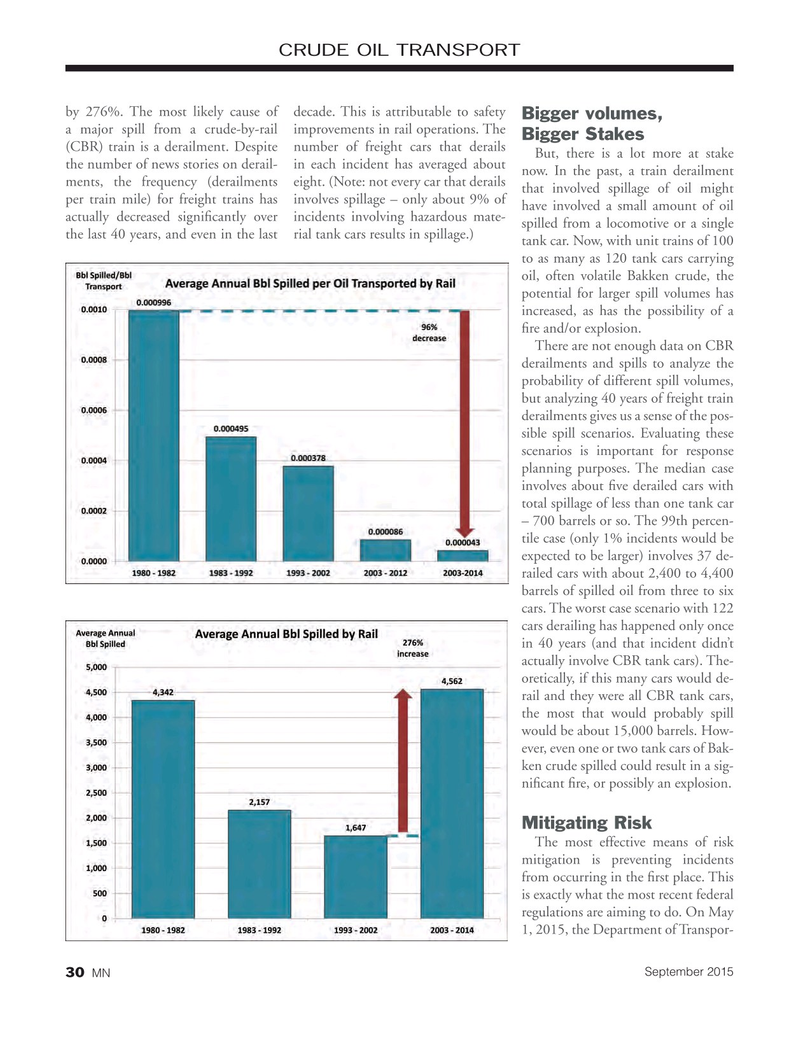
Page 30: of Marine News Magazine (September 2015)
Inland Waterways
Read this page in Pdf, Flash or Html5 edition of September 2015 Marine News Magazine
CRUDE OIL TRANSPORT by 276%. The most likely cause of decade. This is attributable to safety
Bigger volumes, a major spill from a crude-by-rail improvements in rail operations. The
Bigger Stakes (CBR) train is a derailment. Despite number of freight cars that derails
But, there is a lot more at stake the number of news stories on derail- in each incident has averaged about now. In the past, a train derailment ments, the frequency (derailments eight. (Note: not every car that derails that involved spillage of oil might per train mile) for freight trains has involves spillage – only about 9% of have involved a small amount of oil actually decreased signi? cantly over incidents involving hazardous mate- spilled from a locomotive or a single the last 40 years, and even in the last rial tank cars results in spillage.) tank car. Now, with unit trains of 100 to as many as 120 tank cars carrying oil, often volatile Bakken crude, the potential for larger spill volumes has increased, as has the possibility of a ? re and/or explosion.
There are not enough data on CBR derailments and spills to analyze the probability of different spill volumes, but analyzing 40 years of freight train derailments gives us a sense of the pos- sible spill scenarios. Evaluating these scenarios is important for response planning purposes. The median case involves about ? ve derailed cars with total spillage of less than one tank car – 700 barrels or so. The 99th percen- tile case (only 1% incidents would be expected to be larger) involves 37 de- railed cars with about 2,400 to 4,400 barrels of spilled oil from three to six cars. The worst case scenario with 122 cars derailing has happened only once in 40 years (and that incident didn’t actually involve CBR tank cars). The- oretically, if this many cars would de- rail and they were all CBR tank cars, the most that would probably spill would be about 15,000 barrels. How- ever, even one or two tank cars of Bak- ken crude spilled could result in a sig- ni? cant ? re, or possibly an explosion.
Mitigating Risk
The most effective means of risk mitigation is preventing incidents from occurring in the ? rst place. This is exactly what the most recent federal regulations are aiming to do. On May 1, 2015, the Department of Transpor-
September 2015
MN 30

 29
29

 31
31
